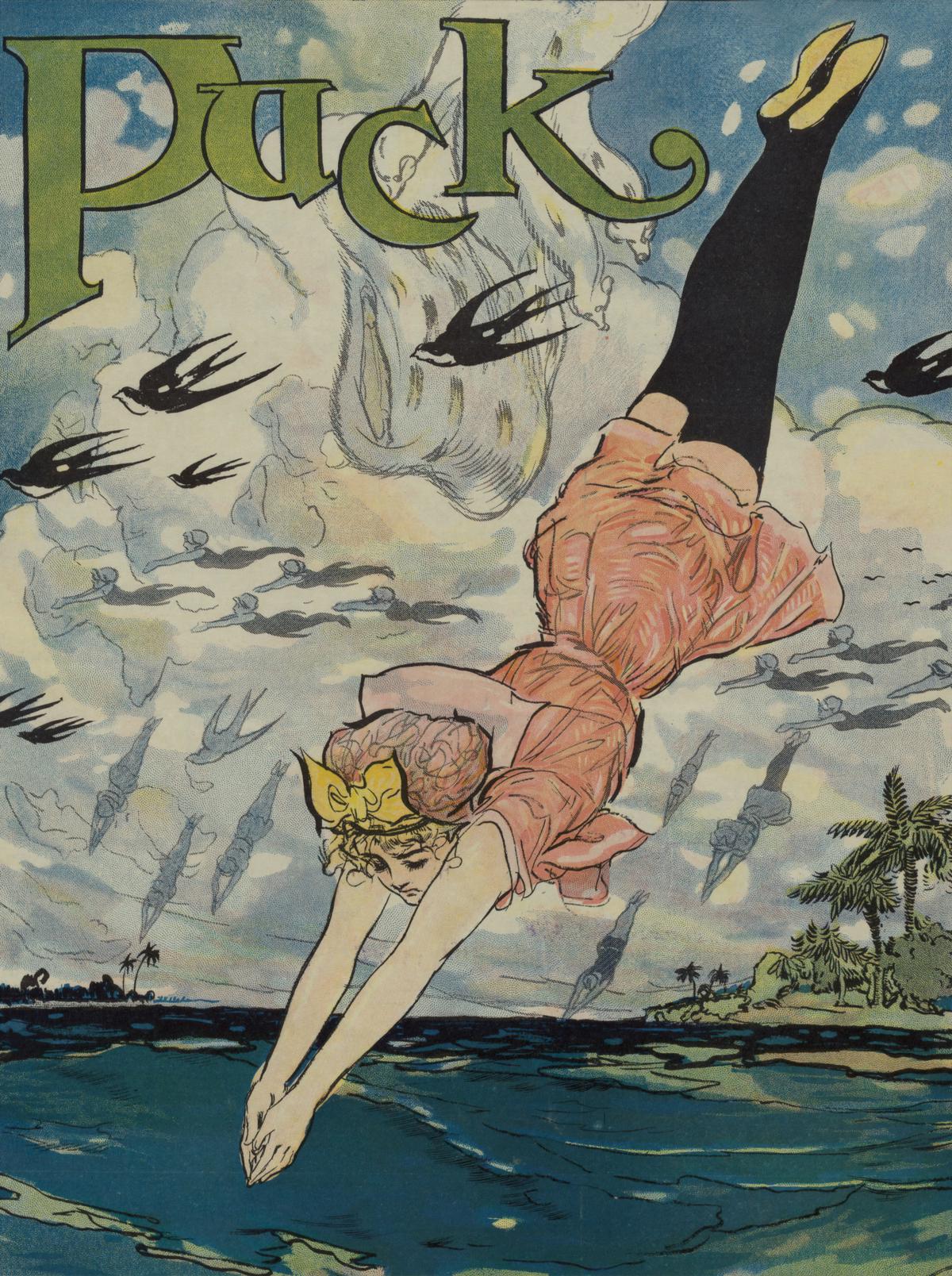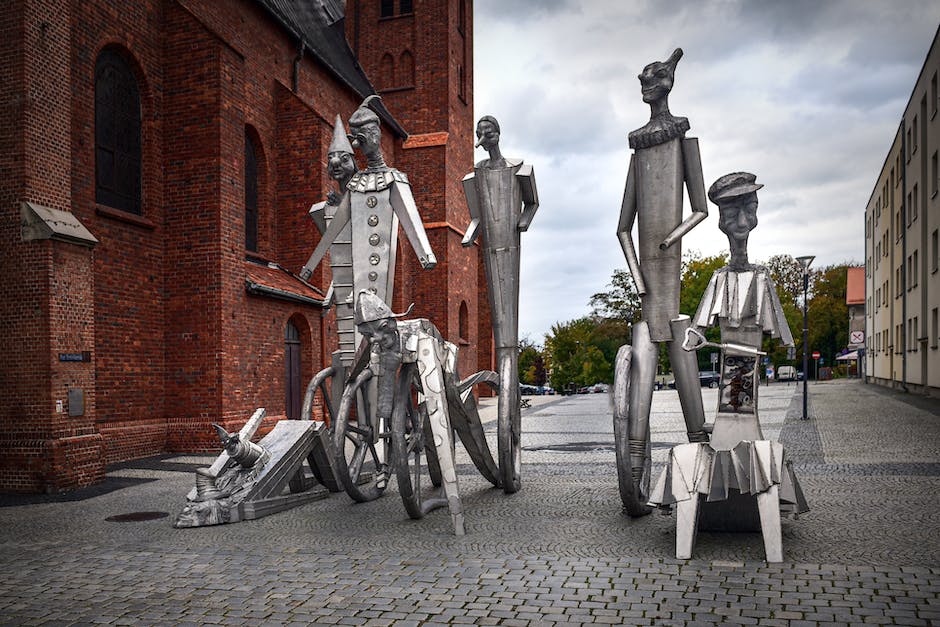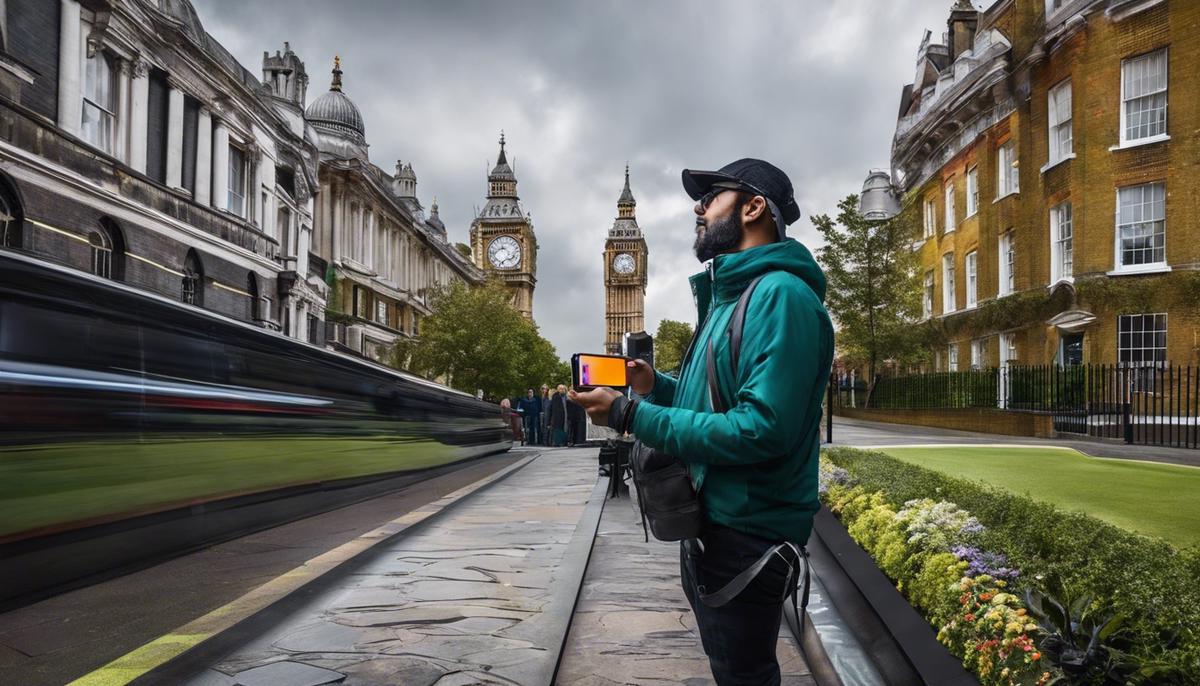London, a tapestry woven with the vibrant threads of culture, history, and innovation, stands as a testament to the transformative power of public art. Whether one meanders through the historic grandeur of Trafalgar Square or wanders amidst the ever-evolving urban canvas of Shoreditch, it becomes apparent that the city’s identity is etched into each artistic endeavour. This essay embarks on an exploratory journey through the varied landscapes of public art installations, from the imposing statuary that has witnessed centuries to the ephemeral brilliance of interactive exhibits. We traverse the capital’s thoroughfares, delving into the compelling sagas of iconic pieces, their creation, the maestros who envisaged them, and their profound resonance with both the Londoner and the global visitor alike.
Iconic Public Art in London
Embark on a Journey Through London’s Public Art Splendours!
London, a canvas of creativity and innovation, is peppered with public art installations that are nothing short of treasured masterpieces. Stride through the city’s bustling heart, and prepare to be dazzled by marvels that delight the eye and challenge the mind. Every corner turned and every street crossed unveils a spectacle!
Leading the pack is Trafalgar Square’s Fourth Plinth, a treasure trove of innovation that showcases a rotating roster of contemporary artworks. It’s a cultural chameleon, changing its artistic skin to bring fresh dynamism to the historic square. One moment it might be a giant blue rooster catching your gaze, and the next, a thought-provoking commentary on our world today – always keeping you on your toes!
Waltz along the South Bank and you’ll lock eyes with the ever-illustrious London Eye. But, hold your gaze longer and discover the promenade’s secret – a string of sculptural wonders breathing life into the riverside. From imaginative creations bending reality to reflective pieces steeped in history, the stretch between the National Theatre and the Tate Modern is a covert gallery under the open sky.
Next, dive into the rejuvenated heart of Kings Cross and find the world-famous sculpture of a giant birdcage with an equally imposing swing titled ‘Icarus’. Here, public art melds with play, delivering a piercing message about freedom and constraint, with a whimsical twist that leaves passersby enchanted. Within a stone’s throw, luminescent fountains and digital art add layers of modernity to this historic transport hub, framing it as a playground for the aesthetically hungry.
Not far behind is the ‘Vessel’ at Hudson Yards, a labyrinthine wonder beckoning with its bronze-clad outline and ceaseless stairs leading to the clouds. It stands as a testament to the marriage of functionality and sheer beauty – a place where art is not just observed but experienced, breathless step after breathless step.
For an unforgettable collision of colour and community spirit, the Brixton Windmill provides a backdrop like no other. Bearing murals that tell a thousand stories of the borough’s vibrant culture and unbreakable spirit, it’s a canvas for the people and a burst of inspiration for any who wander by.
In the queen’s very own backyard, Kensington Palace, witness a garden sculpted by human hands to mimic the wildest of landscapes. Here, amidst the greenery, sculptures lie in wait, surprising visitors between bursts of floral pageantry and hidden alcoves.
There you have it, a curated insight into the public art glories strewn across London’s heart, where every piece tells a distinct story. From historical squares to modern estates, the art is free to all – no ticket needed, just a keen eye and a thirst for the innovative. Make haste, for the city’s open-air gallery is ever-changing, ever-thrilling – a cultural feast awaiting your presence.

Photo by libraryofcongress on Unsplash
Temporary Installations and Exhibits
Temporary art installations are not just fleeting injections of creativity; they are the beating heart of London’s ever-evolving cultural identity. Each new structure, each original exhibition that pops up across the city’s diverse neighborhoods, is not merely an object to observe—it’s a conversational spark, a social media sensation, a communal experience that draws Londoners and travelers alike into a shared moment in time.
Consider the wonder sparked by immersive light installations that transform the night-time skyline, pulsating with vibrant colors that invite onlookers into a world where light, technology, and space dialogue in dazzling harmony. These temporary spectacles often highlight historic architecture, casting iconic buildings in a completely new light—both literally and metaphorically—thereby reopening our eyes to the treasures we walk past every day.
Then there’s the power of the unexpected that temporary art wields in full force. Imagine stepping off the usual path in one of London’s storied parks, only to be greeted by a gravity-defying sculpture that seems to challenge the very laws of physics. These pieces don’t just embellish the space they occupy; they transform it, urging viewers to engage with their environment in a fresh and thought-provoking way.
Even beyond the visual, these art installations influence the soundscape of the city itself. Interactive musical pieces, for instance, sprout up where one least expects them, turning a nondescript alleyway or a bustling square into a hive of auditory exploration and dynamic engagement.
What’s more, temporary art has the unique ability to address current issues and topical debates. Artists respond to the zeitgeist with installations that are as much a commentary as they are a visual feast, inspiring dialogue and reflection. This ensures that the cultural landscape of London isn’t just reflective of its rich history but is also sharply attuned to the living, breathing present.
The beauty of temporary art, of course, lies in its transience. There’s a certain urgency to experience and appreciate these installations before they vanish and become mere memories or images preserved on smartphones. This scarcity of time fuels discussion and pushes people to participate in the cultural moment; it’s one of the secrets behind the bustling crowds that form queues to witness these fleeting marvels.
In essence, temporary art installations are catalysts for change, challenging both artists and audiences to view the city through a lens of perpetual reinvention. Each piece leaves an invisible imprint on London’s cultural terrain, contributing to a vibrant tapestry that’s continually being woven with the threads of creativity, innovation, and shared human experience. As these temporary wonders come and go, they remind us that art is not static; it pulses through the city streets, inviting Londoners to step out and explore the boundless possibilities of the world around them.

Public Art and Community Engagement
Public art in London does more than just spruce up the urban landscape; it’s a dynamic conversation starter, a silent storyteller, and a playful provocateur rolled into one. As we breeze through this vibrant city, our daily paths are crossed by the most unexpected visual narratives, forging connections between history, culture, and community in the form of art that is as much a landmark as the historical monuments beside which they often stand.
Let’s saunter through the streets and along the alleys where urban art murals paint palettes of diversity and history. In places like Shoreditch and Camden, the walls whisper tales of heritage, sometimes with a cheeky nod to the present. Artists capture the character of these neighbourhoods, creating snapshot moments that engage passersby with a familiarity and authenticity that’s both comforting and thought-provoking.
In the bustling squares where market stalls once stood, modern installations now ignite debates on everything from environmental concerns to social justice. Art here isn’t just passive—it’s a megaphone for the marginalized voices and a platform for silent stories to resonate through the heart of London.
It’s the unexpected corners of public parks where sculptures playfully beckon for attention; they’re conversation pieces that draw families, students, and the young at heart into a shared experience. These pieces speak in the secret language of imagination, prompting us to think, reflect, or simply marvel at the creativity that takes root in the green lungs of the city.
Transforming the riverbanks of the Thames, the art becomes an experience in motion. Boat tours reveal stories sculpted in stone and metal, giving onlookers a glimpse of London’s personality: innovative, bold, and unfettered. These waterside wonders aren’t just aesthetic, they’re the anchors of community identity, blending seamlessly with the history that flows like the river itself.
A step into the world of interactive installations and one understands how they beckon the touch, the partaking, and the sense of collective play. These pieces, often obscurities that blur the line between art and reality, do more than stand around; they invite you in for a dance, a reflection, a moment of shared humanity amidst the concrete jungle.
When night descends, London transforms again. With the play of light and shadow on water features and bridges, public spaces are turned into live canvases that embody the city’s pulsating energy—glimmering, dancing, and alive. Through this nocturnal art, communities come together in a vigil of celebration, a silent disco of visual spectaculars that speak louder than words.
Finally, let’s not forget the benches with stories to tell, the phone boxes with an artist’s touch, and the railway arches reborn as canvases. They gently push us to look differently at what was once mundane, turning everyday objects into backdrops for inspiration and curiosity.
Public art in London doesn’t stand idle – it moves with the city, breathes with its people and thrives in the ever-shifting spectacle of the metropolis. It’s the heartbeat of London, the unseen thread that weaves together the diverse tapestry of its inhabitants, creating a masterpiece that is never quite finished, always evolving, and eternally fascinating.

Interactive and Tech-Driven Public Art
In the high-speed whirl of London’s art scene, technology isn’t just part of the backdrop—it’s becoming the very canvas upon which modern public art is splashed. Say hello to the futuristic spectacle of augmented reality (AR) art! It’s transforming mundane walks through the city into adventures in surreal landscapes. Iconic places like Covent Garden and the historic Leake Street graffiti tunnel are now canvases for AR experiences, where passersby, armed with smartphones, uncover hidden digital layers to urban life—a dragon perched atop a building or a historic figure striding along the Thames.
Outdoor projection mapping is another tech trick that’s electrifying London’s nights. The ancient walls of The Tower of London or the stately façade of Buckingham Palace? They’re not just silent witnesses to history; these days, they dance in a riot of animated light, telling tales of old and new. This isn’t just about beauty; it’s a visual conversation, stirring dialogues on everything from climate change to cultural heritage.
Then there’s sound art, with installations like ‘The Singing Tree’ at the V&A Museum Court. Step close. Listen. The chatter of everyday life merges with a chorus of human voices and nature’s whispers, forming a living sculpture of sound, powered by real-time technology.
Tech is even bringing new life to stony-faced statues across the city. Not static anymore, these bronze and marble figures engage with observers through QR codes, offering a historical lens and contemporary twist, narrated by voices that resonate with London’s diverse cultures.
But have you heard of virtual galleries? Spaces like the Tate Modern are pushing into the digital realm—offering virtual exhibitions that dissolve the limits of physical space, letting the digital and physical worlds blend seamlessly. With virtual reality (VR) headsets, one could be teleported from the plains of the Serengeti to a burst of supernovas in deep space, all while standing along the bustling Millennium Bridge.
In the East End, look out for programmable LED arrays adorning the facades of new housing developments. They aren’t just about flashy advertisement; these LEDs illuminate local artists’ dynamic creations, crowd-sourced and ever-changing, reflecting the area’s vibrant pulse.
It’s clear—technology is the new alchemy of public art, turning London’s streets into an exuberant, ever-evolving gallery without walls. The city’s heartbeat accelerates with each digital intervention, etching an indelible mark on the soul of every Londoner and visitor alike. Ready for the next art journey in the British capital? Just step outside.

Funding and Support for Public Art
Bridging Creativity and Community: Unveiling the Engines Behind London’s Artistic Pulse
Art thrives where it’s cherished, and London’s public art scene blossoms from a potent mix of dynamism, innovation, and fervent community participation. London refuses to be another page in the history books; it’s driven by a present that is as vibrant as a palette of neon paints on an artist’s canvas.
Let’s peel back the layers of the magic behind London’s art scene. One critical cog in the art machinery is the robust funding and support by both the government and private benefactors. Funding enables artists to dream big, vital for creations that demand attention, spark conversation, and dare I say, revolutionize perspectives!
Collaboration also takes center stage. London’s art institutions and local councils foster symbiotic relationships with creators, pooling resources to erect sculptures and installations that are towering testaments to communal efforts. These partnerships aren’t just on paper – they bring professionals together from diverse backgrounds, each adding their unique stroke to the masterpiece that is London’s public art scene.
Education plays its part too! From the bustling art schools to the workshops held in the shade of the installations themselves, London injects art into its youth and community. A public well-educated in art appreciation guarantees an audience ready to engage and interact, ensuring the city remains a hotbed for artistic experimentation.
Let’s not forget the festivals and events. From the acclaimed Frieze Art Fair to the enchanting Canary Wharf Winter Lights, these grand celebrations of art provide stages for both upcoming and established artists, showcasing works that might otherwise shy away in private galleries.
And then there’s the digital space – an agora of the modern age. Social media serves as the megaphone, amplifying the reach of public art to global audiences, stirring international dialogues, and attracting cultural tourists itching to exchange their virtual likes for tangible experiences.
But it’s not just the internet buzzing with pixels and posts – urban spaces are being redefined. No longer the static backdrop to daily life, they become interactive canvases. From whispering corners where statues speak, to alleyways where walls beckon with the stories of a thousand colors, this truly is a city where art doesn’t just imitate life – it is life.
And so, the mechanisms that sustain London’s ever-shifting art scene are as diverse as the artworks themselves. It’s a tour-de-force of public engagement, proactive funding, creative education, celebratory events, and a rich digital footprint, all conspiring to keep this majestic city at the forefront of the public art stage, pulsating with the undying spirit of creativity.

The rich tapestry of London’s public art stands not merely as a collection of objects to be admired but as a dynamic forum for conversation, innovation, and community cohesion. Through the mediums of paint, stone, and digital light, these installations continue to challenge perceptions, encourage discourse, and forge a diverse cultural landscape in one of the world’s most cosmopolitan cities. As the metropolis forges ahead, its public art remains a steadfast mirror and moulder of the society it decorates, a beacon of creativity that reflects the vibrancy and complexity of London life.





















